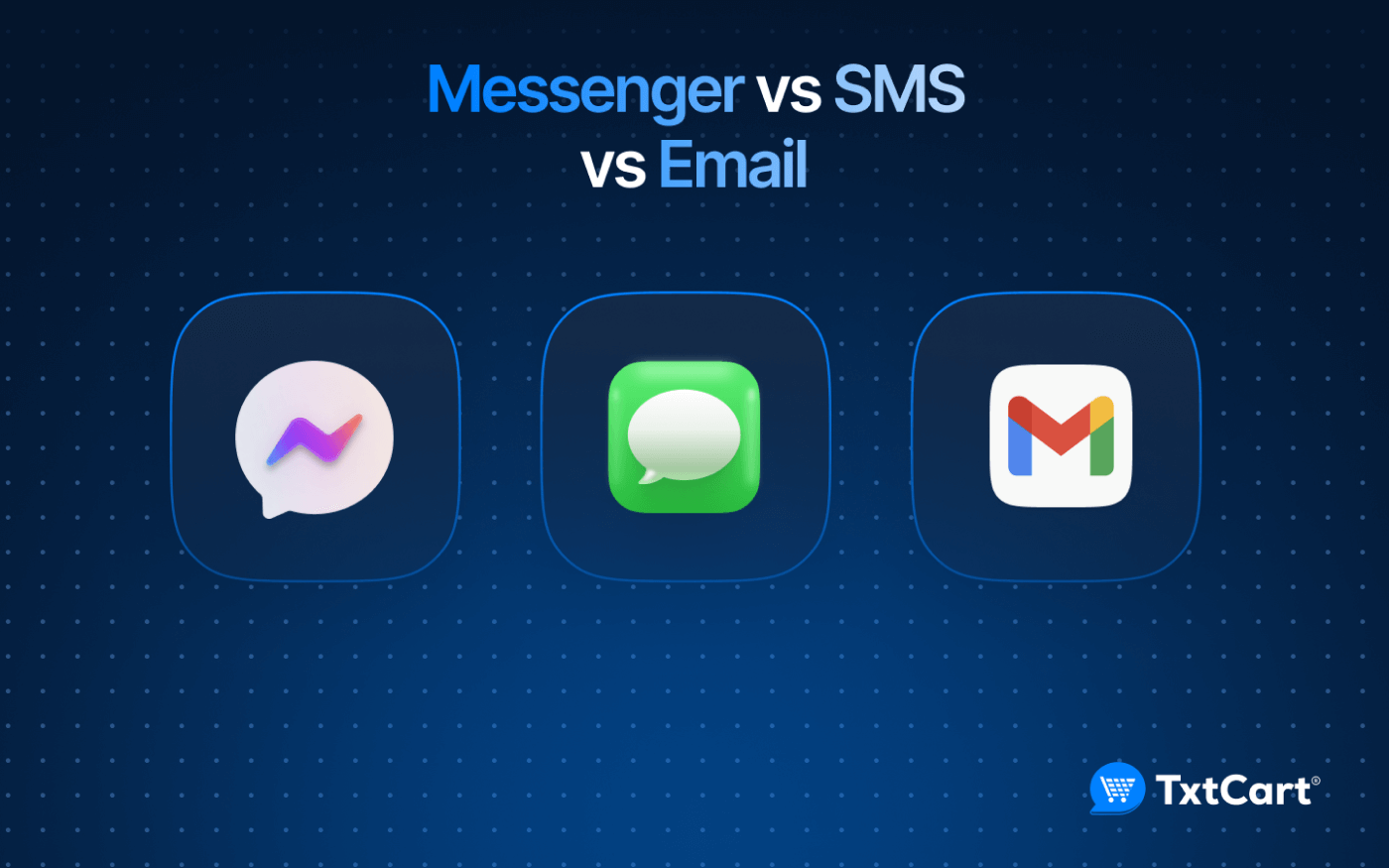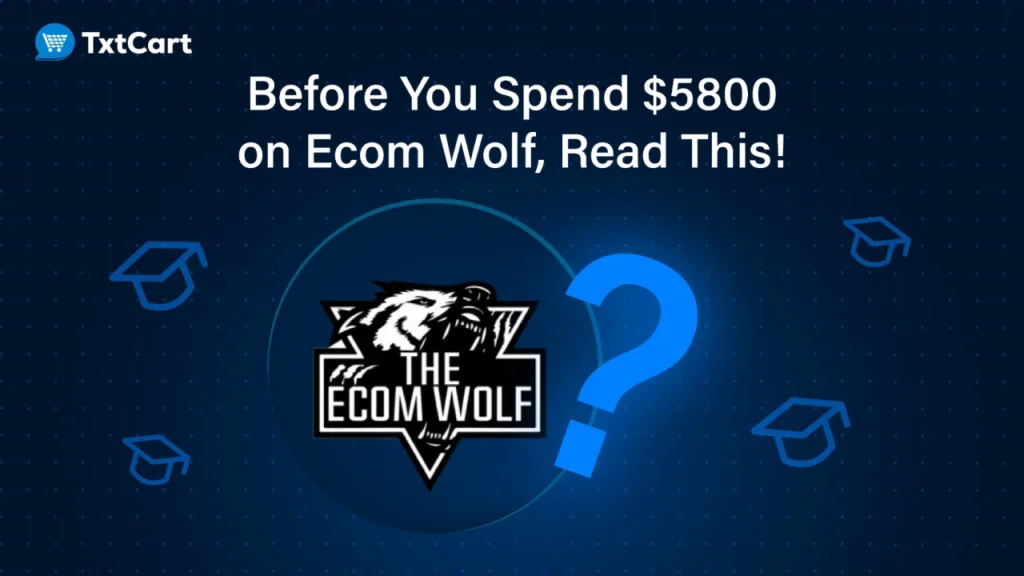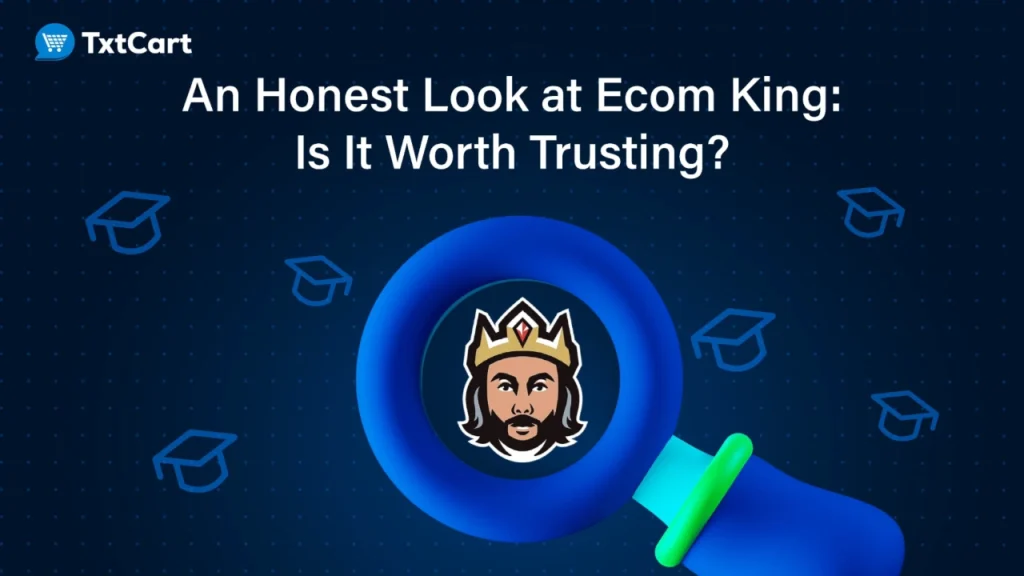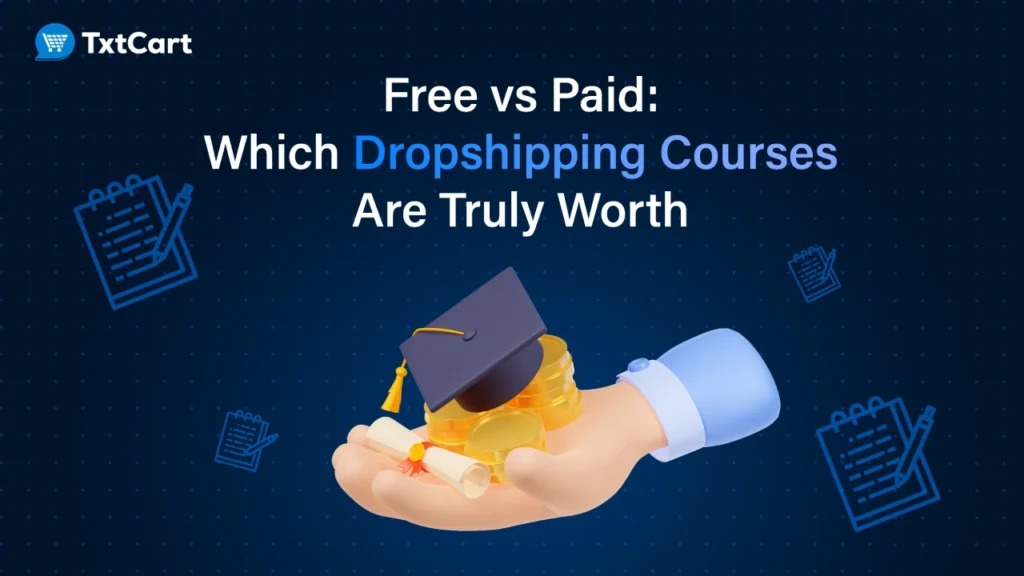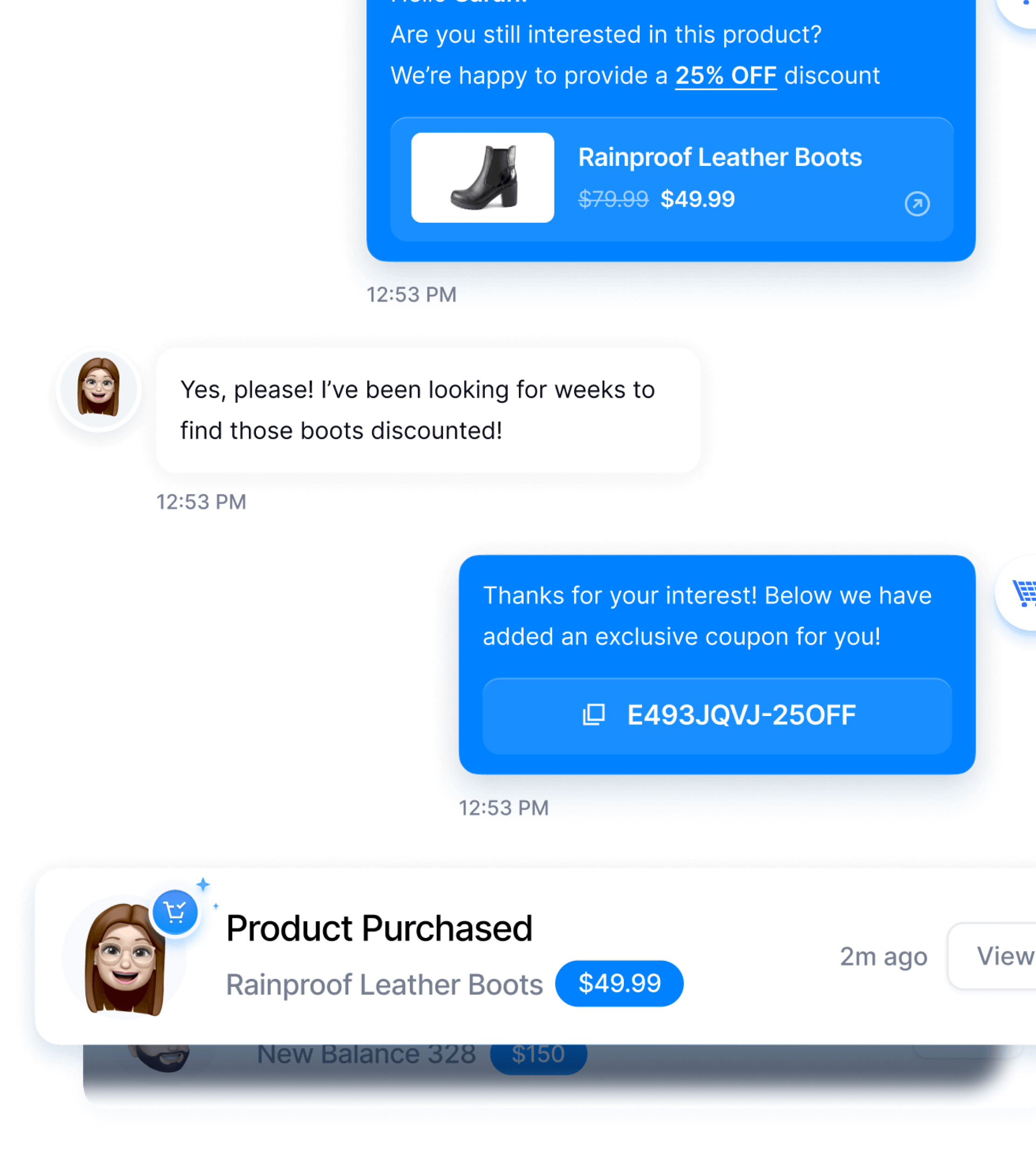Learn more about how Facebook Messenger vs SMS vs Email stacks up as marketing channels for your Shopify store.
In a digital era, if you choose to take your business online, you are competing with over 24 million others, seeking the attention of that elusive customer. And the numbers are just getting more interesting (read, higher) by the day.
According to this report, there are 24 million eCommerce websites across the globe as of today.
With a number this large, you can be sure that capturing and retaining consumer attention is only going to get harder.
This is why you need a multi-channel marketing approach to reach your audience at the right time, with the right message to turn them into buyers.
In an eCommerce scenario, the three most common channels used to communicate with shoppers are email, SMS and Facebook Messenger.
We’re not talking about digital touchpoints here.
Each of these channels comes with its own set of challenges and you can’t use a “One-size-fit-all” approach. This means that you’re going to have to put in some effort into strategizing for each.
So which one do you choose first?
The answer varies from business to business. But let’s help you get there!
Messenger vs SMS vs Email Marketing
SMS marketing – There’s no school like the old school.
Almost everyone you know today has a mobile phone. In fact, some of you are reading this very blog post on a smartphone, on your way to work. SMS marketing has been around for quite some time now, and it remains to be one of the most popular ways marketers are getting their message across (pun intended).
And SMS is showing no signs of slowing down. Globally, a record 5.9 billion people are expected to send and receive SMS by 2025. The numbers are pointing in one direction – you need to up your SMS marketing game.
Here are a few statistics that should open your eyes to the importance of this humble marketing channel:
- Research suggests that close to 6 billion people will send and receive SMS by 2025
- About 61% of the marketers still don’t use SMS as a marketing channel
- 65% of the brands that were interviewed did not have a strategy in place when it came to dealing with bulk SMS messaging campaigns
- 92% of adults in the US own a text-enabled phone, and 98% of these smartphone users use texts on a regular basis
- SMS open rates are as high as 98%
Now if you’re wondering what can one really send over as a message that is restricted to a few characters, let us tell you.
Leading brands are using SMS marketing for:
- Abandoned cart recovery
- Having two-way conversations with customers
- Promoting ongoing sales, discounts, and deals
- Requesting feedback on purchases
- Sending order updates
Here’s an example of how text marketing works with automation and live agents:
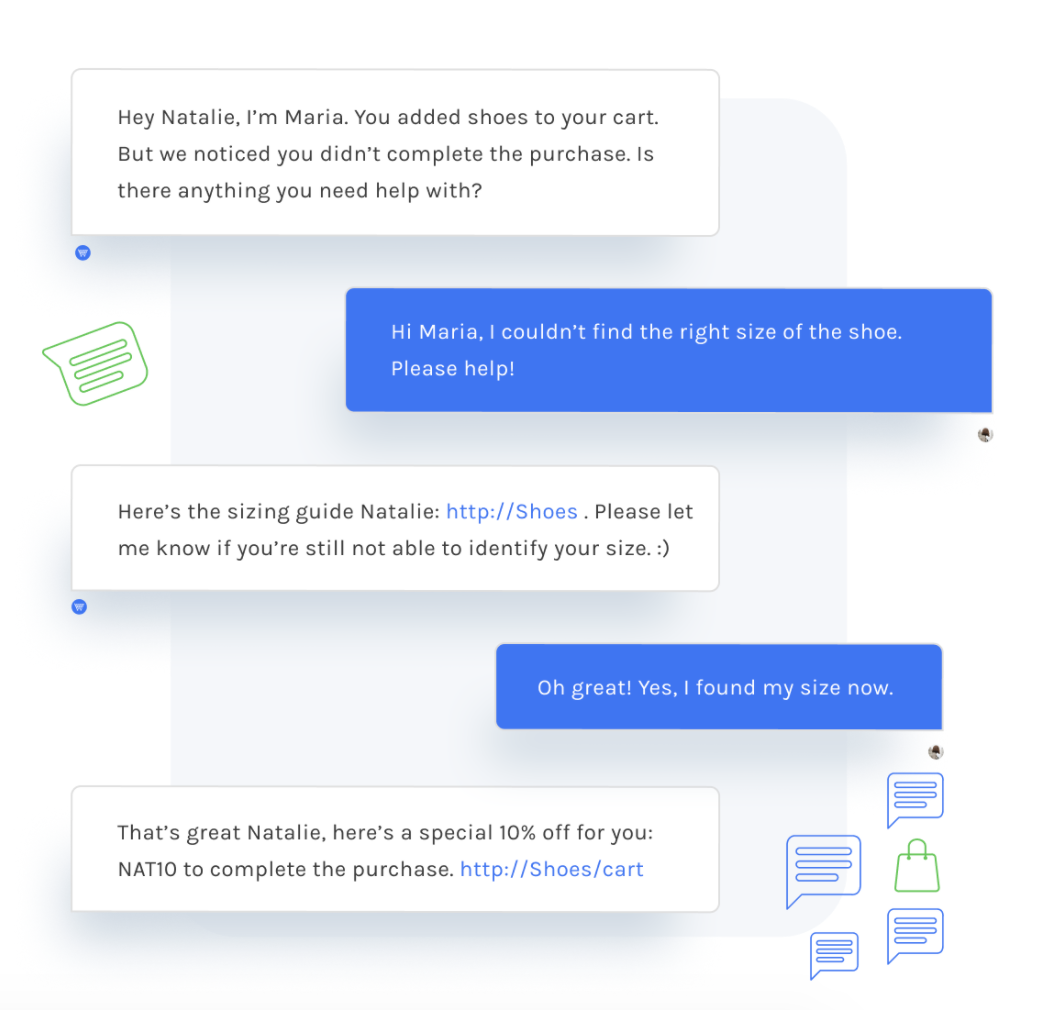
Email marketing – Still a horse you can bet on!
Email marketing has been around for quite some time now as well, and if the numbers are to be believed, it is still going strong. Despite everyone talking about choked inboxes, email marketing statistics on average are still impressive:
- According to this survey by Custora E-Commerce pulse, email accounted for 19.8% of all transactions, just behind organic search (21.8%) and paid search (19.9%)
- Emails had a conversion rate of 15.11% in 2020, according to this report
- When compared to Facebook and Twitter, email is 40% better at converting
- Marketers use Email marketing mostly for lead generation (85%), sales (84%) and then customer retention (74%)
- Marketers use email to get in touch with their clients 2-3 times every month
- A majority (64%) of the B2B respondents feel email automation techniques actually work
- A personalized subject line ensured that 62% of emails are opened
- 88% of respondents say that they will respond to an email if it looks like it was handcrafted for them
But as of today, when every brand out there is going to email that same consumer, you need to ensure yours adds value at every stage in the purchase cycle.
So instead of email blasts, use email marketing to send out messages that guide the online shopper through a series of milestones that eventually lead to them making a purchase from you. For instance:
- New subscriber/welcome email
- Sales promotions email
- Customer surveys
- Birthday/Anniversary gift
- Cart abandonment email
- Product recommendation emails
- Order status emails
Here’s an example of two emails that a brand is sending out to subscribers at different stages:

As you can see, email is still a marketing channel you cannot ignore. But as an interesting side note, we would like to add that SMS marketing is a tad more effective than email marketing.
Reports suggest that it takes a subscriber 90 seconds to respond to a text message, while it takes about 90 minutes or more to reply to an email.
Facebook Messenger Marketing – The new kid on the block.
Compared to the other channels on our list, Facebook Messenger is a fairly new channel that is now being used for marketing.
A whopping 3.6 billion people used social media in 2021 and the number is projected to grow to 4.41 billion by 2025, according to this report by Statista. The giant among these is Facebook, with a record 2.7 billion active monthly users in Q3 2020.
Facebook Messenger was launched in 2011 and proved to be an instant success among its users. No wonder marketers took to the platform in a big way to connect with this young, growing userbase.
As of today, there are more than 1.4 billion people who actively use Facebook Messenger, but less than 1% of businesses leverage the channel to its full potential. But those who do, see an average open rate of 70-80%, which is way higher than most of the other channels out there.
Here’s an example of what Messenger marketing currently looks like for most eCommerce businesses:
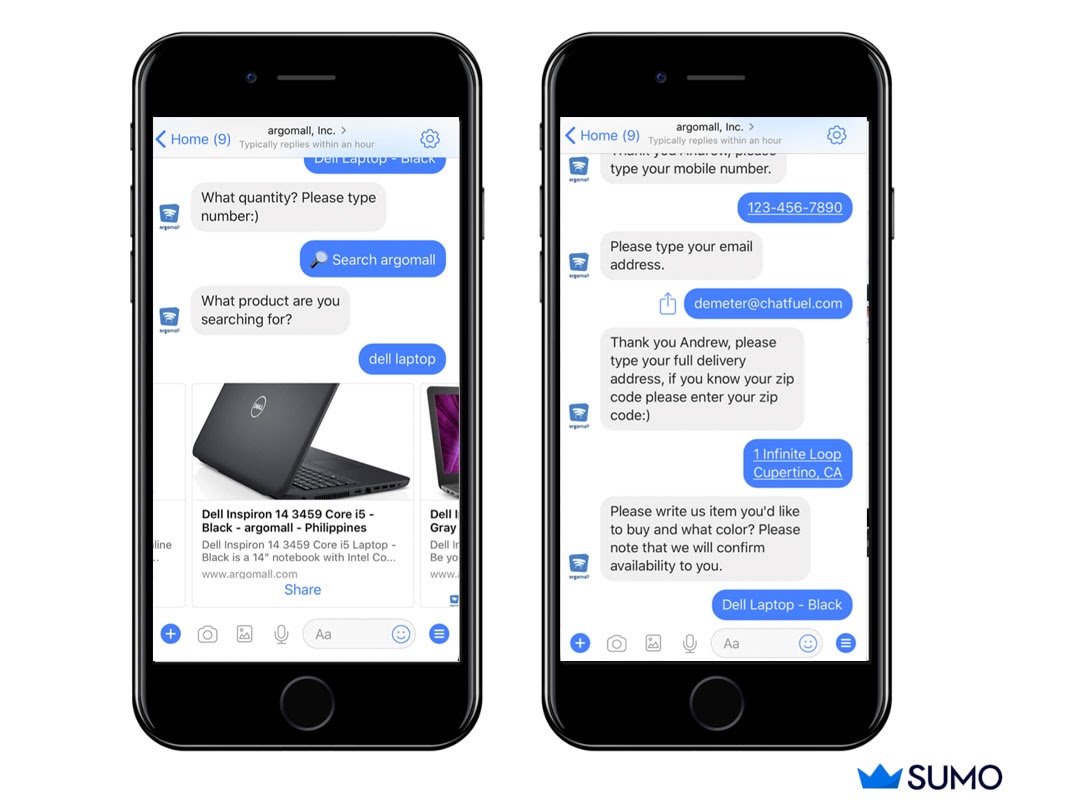
Leading eCommerce brands across different industries are using Facebook Messenger marketing automation to:
- Recover abandoned carts
- Send product recommendations
- Send order and shipping updates
- Request feedback
- Request product reviews and ratings
- Promote ongoing sales, discounts and more
The effectiveness of it all? Here are some statistics that boast of Messenger as a great channel to communicate with online shoppers:
- Facebook Messenger is growing super-fast, at a rate of 600k new users per day
- Of the 2.2 million apps available on Apple App store and 2.8 million people available on Google Play store, Facebook messenger is the second most downloaded app. The most downloaded app, is, of course, Facebook
- 55% of users in a survey preferred to talk to a business using a chatbot
- The number of photos sent on Facebook messenger amounts to a staggering 17 billion
- Facebook Messenger users send an enormous amount of messages a day. And by enormous, we mean 8 billion
Simply put, owing to its conversational nature and the general habit of its users remaining active on the channel all day, Facebook Messenger makes for a promising marketing channel.
But just like emails, Facebook Messenger messages can only be read when a user is online. Even if you’re automating your campaigns to be sent at a given time, it entirely depends on when the user logs in. This is where SMS marketing becomes more lucrative – the message gets delivered and it doesn’t require someone to be logged into a channel or platform to receive it.
Facebook Messenger vs SMS vs Email – Parting words
If you go by the statistics of each channel, you will realize that all of them have the potential to drive more customer engagement and conversions for your Shopify store.
Each comes with its own set of pros and cons. And with different consumer behavior, tapping into the potential of each is the only way to ensure your online business grows.
That’s why our Shopify experts recommend that you use all three channels in tandem to get the best of results.
Remember, we’re spending a lot more time online today. But we’re also making conscious efforts to log off every now and then to give ourselves a digital break. Irrespective of the mood we are in, we’re making most of our purchases online – including the day-to-day basics like grocery items.
So take into account our online and offline behavior, and you’ll know why we recommend using all the channels in your marketing strategy!
Ready to reach your customers and subscribers where they are the most active?
Install the TxtCart app to start SMS marketing today.
Read Next: 7 Best eCommerce Sales Channels for Scaling Your Business
